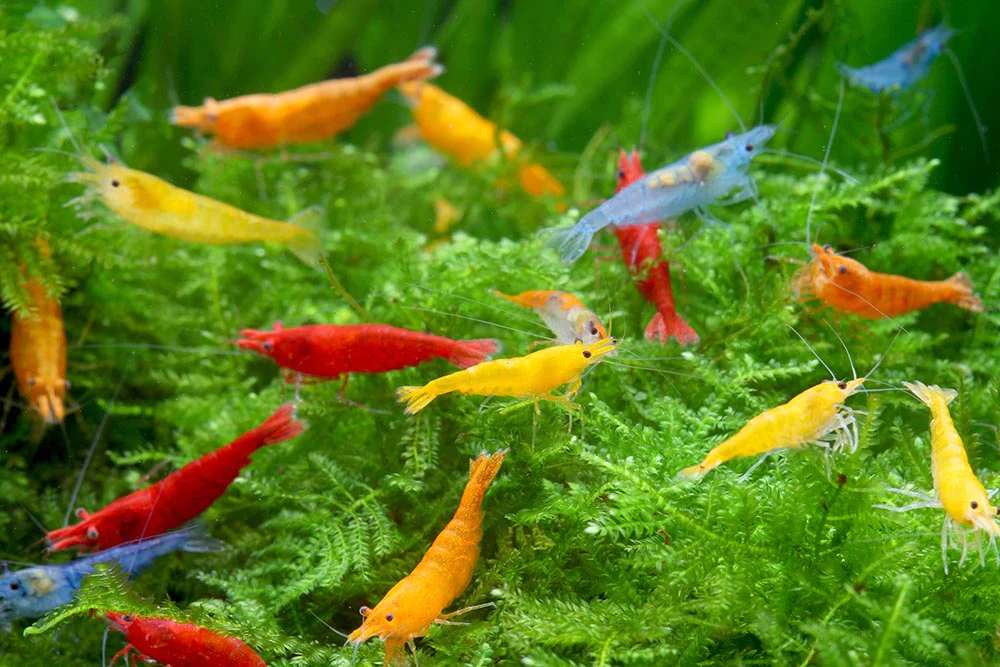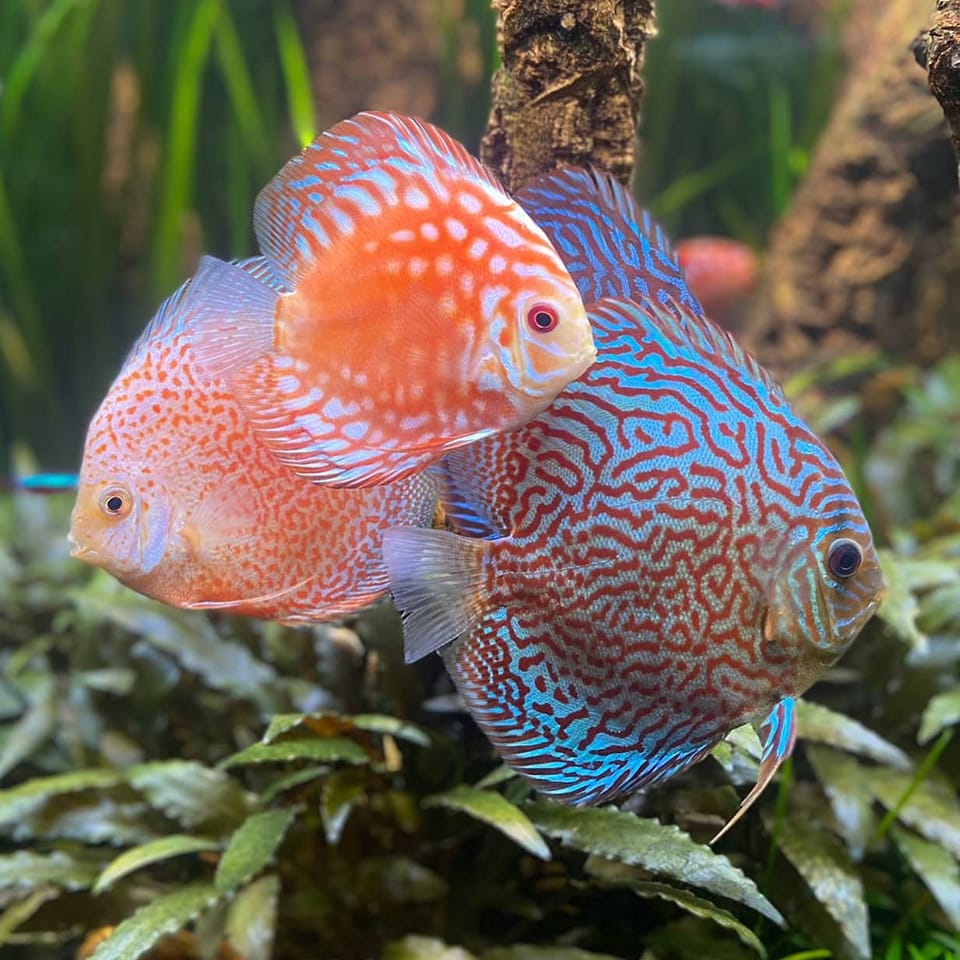A Beginner's Guide to Successfully Keeping Shrimp in Your Aquarium
If you are interested in keeping shrimp in you aquarium, you've come to the right place! Fortunately, shrimp don't ask for much and are relatively easy to care for. Moreover, dwarf shrimps offer you various benefits aquariumfrom cleaning up food scraps to removing algae. This makes shrimp a lively, colorful and useful addition to any aquarium!
In this blog we will teach you all about these fun and interesting animals. How do you keep shrimp? Which establishment need shrimp? Do shrimp need special water parameters? What do shrimp actually eat? And what are the benefits of shrimp in you aquarium?
From choosing the right shrimp species to helpful tips for creating a shrimp-friendly environment, we've got all the information you need to successfully keep shrimp in your home. aquarium.
What are Shrimp?
Shrimp are small crustacean crustaceans belonging to the order Decapoda, meaning "decapods". They belong to the Caridea family and are commonly found in freshwater and saltwater environments around the world. Shrimp have an elongated body with ten legs, the first two pairs of which are transformed into prehensile legs.
There are several types of shrimp, including the popular aquarium dwarf shrimp that are often kept in aquariums for their attractive colors and interesting behavior. These shrimp are usually small in size and have vibrant colors with unique patterns ranging from red, orange and yellow to blue and green.
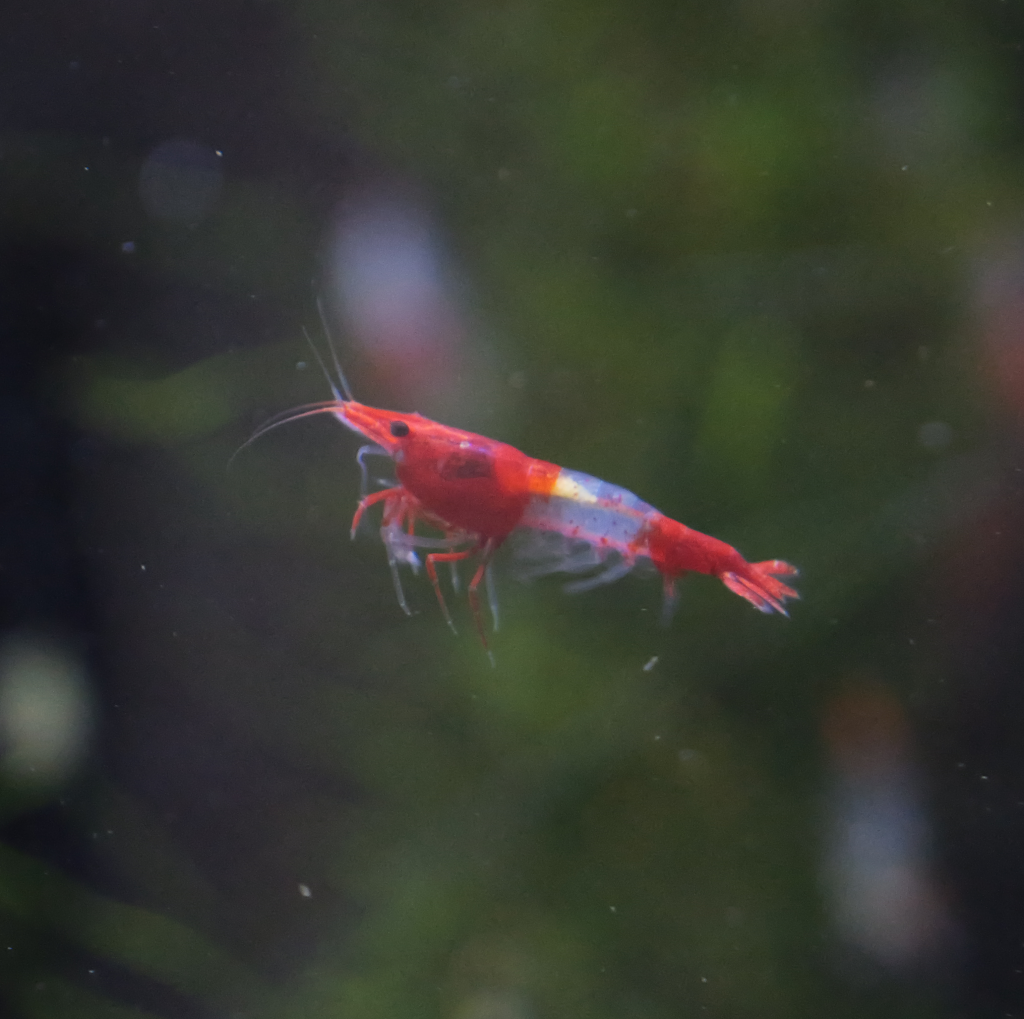
What types of shrimp are there?
Shrimp come in all shapes, sizes and colours, so there is something for everyone! Almost all types of dwarf shrimp for your aquarium can be divided into two main types: Caridina shrimp and Neocaridina shrimp. Within these two groups, there are countless different dwarf shrimps, each with their own specific water parameters and care needs. We are going to give you some more information about these two types of shrimp in this blog.
Neocardina Shrimp
Neocaridina shrimp, such as the popular Fire shrimp, are ideal for beginners looking for easy-to-keep dwarf shrimp for their first shrimp aquarium.
These shrimps are available in different colors, including red (the famous fire shrimp), orange, blue, yellow, green, black and partly transparent. Although often considered less attractive compared to Caridina shrimp, Neocaridina shrimp are easier to care for.
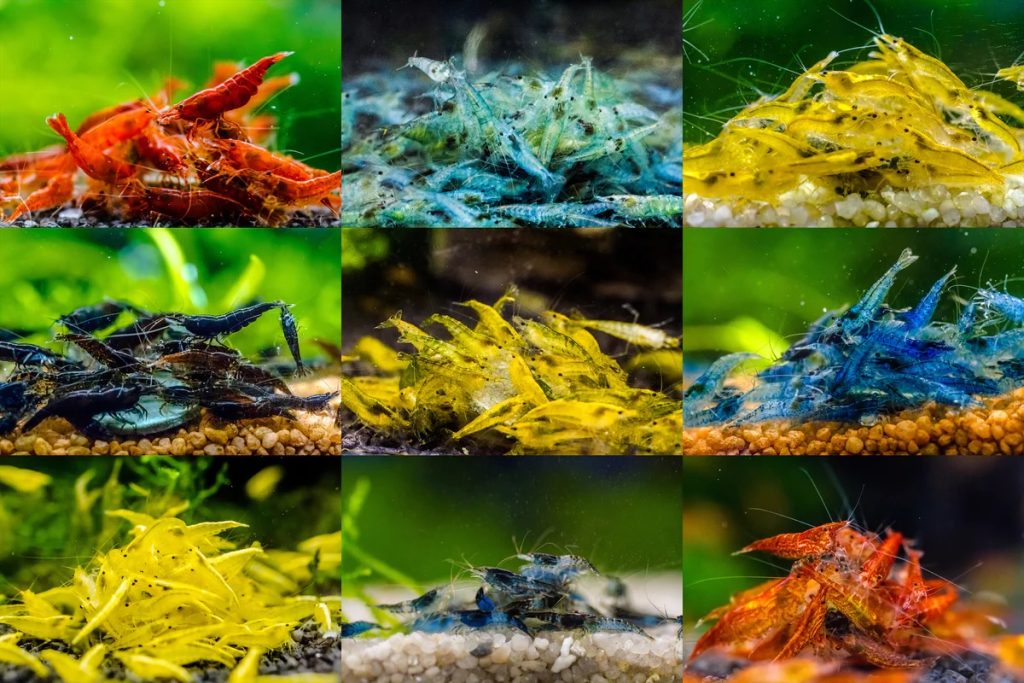
Neocaridina shrimps thrive in one shrimp aquarium of 15-20 liters, which means you don't need a large one aquarium need to get started with these fun pets. Of course the bigger is always better! They also don't need very specific water parameters unless there are significant variations in the hardness and pH of the tap water where you live.
Neocaridina shrimp are ideal shrimp to start with because they don't need very specific water parameters.
It's always important to you shrimp aquarium screw in well before placing the Neocaridina shrimp in it. Ammonia and nitrite are deadly even for these strong dwarf shrimps. So use one aquarium water test kit to make sure the water is OK for your shrimp. This helps create a healthy living environment for your shrimp.
Ideal water values for Neocaridina shrimp:
| PH | 6,5 – 7,5 |
| GH | 2 – 8 |
| KH | 4 – 8 |
| N02 | 0 |
| conductivity | 400 - 600 ms |
Caridina Shrimp
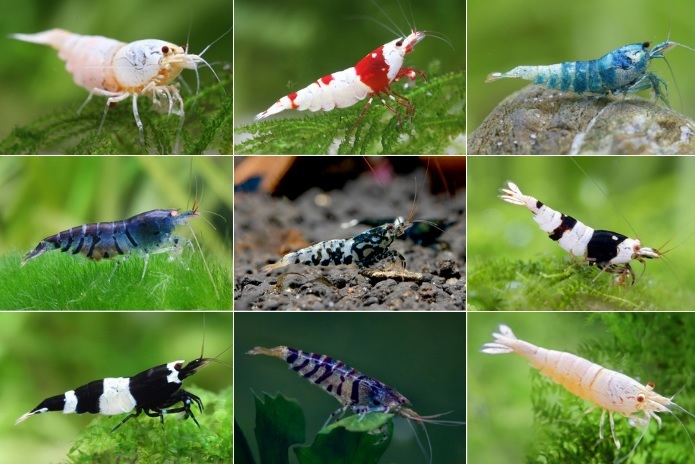
Caridina shrimps are often seen as the nicer variant than the Neocaridina shrimps. These shrimp have more intensive colors and also come with complex patterns.
This in turn ensures that these shrimp require more intensive care and attention. To thrive optimally, Caridina shrimp have specific requirements with regard to both water values and the establishment of their living environment.
The Caridina shrimp can already be kept in a nano aquarium of 15 – 20 liters of water. Of course, bigger is always better and much more fun! The Caridina shrimp have specific requirements for their water parameters in order to survive.
As with Neocaridina shrimp, it is essential to keep it shrimp aquarium to run in well before introducing Caridina shrimps. These delicate dwarf shrimp require close monitoring of water quality. Regular testing of water parameters is a crucial step in keeping Caridina shrimp, which is why high-quality measuring equipment is indispensable.
Caridina shrimps originate from Asia and are mainly found here in small watercourses and caves. The water in which these shrimps originally live consists mainly of rainwater. As a result, they have specific requirements for the water values, because rainwater has a completely different value than our tap water.
Tap water is not sufficient to achieve the ideal water values. Tap water usually has a higher pH, KH, GH and conductivity than the values mentioned earlier. Fortunately, solutions are available, such as using osmosis water, pH lowering soils en mineral salts, to adjust these water parameters. Using these methods you can create the environment that is ideal for keeping Caridina shrimp.
Ideal water values for Caridina shrimp:
| PH | 6 – 7 |
| GH | 5 – 6 |
| KH | As close to 0 as possible |
| N02 | 0 |
| conductivity | 200 - 300 ms |
| Temperature | 20-28 degrees |
Can you keep Caridina and Neocaridina Shrimp together in your aquarium?
In general, it is not recommended to put Caridina shrimp and Neocaridina shrimp together in the same aquarium hold. This is because they have different requirements in terms of water values and living environment.
Caridina shrimp, such as Crystal Red, Crystal Black and Taiwan Bee shrimp, require specific water parameters with a low pH, low to very low conductivity (EC) and soft to very soft water hardness (GH). They thrive best in water with a pH between 5,5 and 6,5, an EC of 150-300 microsiemens and a GH of 4-6.
We do not recommend keeping Caridina shrimp and Neocaridina shrimp together in the same aquarium. They have different requirements in terms of water values and living environment,
Neocaridina shrimp, such as Fire Shrimp, Red Sakura, Blue Dream and Lemon Shrimp, on the other hand, are much more flexible in terms of water parameters. They can survive in a wide range of water parameters and are less sensitive to fluctuations.
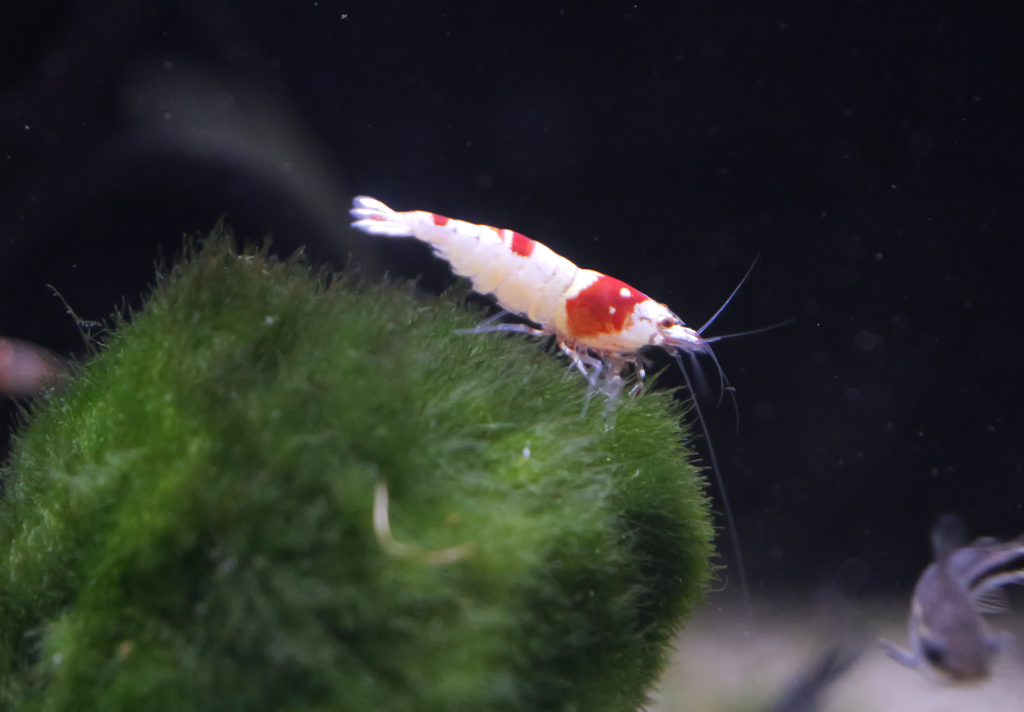
The right water parameters
There are several methods available to achieve the correct water values for Caridina shrimp. One of the options is to use rainwater or osmosis water, because these water sources have a different composition than tap water.
If you use osmosis or rainwater, you can compose this yourself by adding acids and minerals. This makes it easier to achieve the desired water values.
Using a pH lowering soil
To achieve the correct pH value in your shrimp aquarium it is essential to have one pH lowering soil to use. By rain or osmosis water to be combined with a pH lowering soil make sure your pH remains stable.
When you are one pH lowering soil want to use tap water, there are some things to take into account. That's how one binds pH lowering soil the kH, and this allows the soil to become saturated over time.
That is why we recommend doing small water changes to extend the life of your soil and to ensure that there are no major fluctuations in the water values.
To get the best result and to keep your pH stable, we recommend rainwater or osmosis water in combination with a pH-lowering soil.
The operating time of your bottom differs per type of water you use, because tap water has a different composition than osmosis water. In general, a thicker base will last longer than a thinner base. It is advisable to maintain a maximum thickness of 5 centimeters to maintain a good water flow.

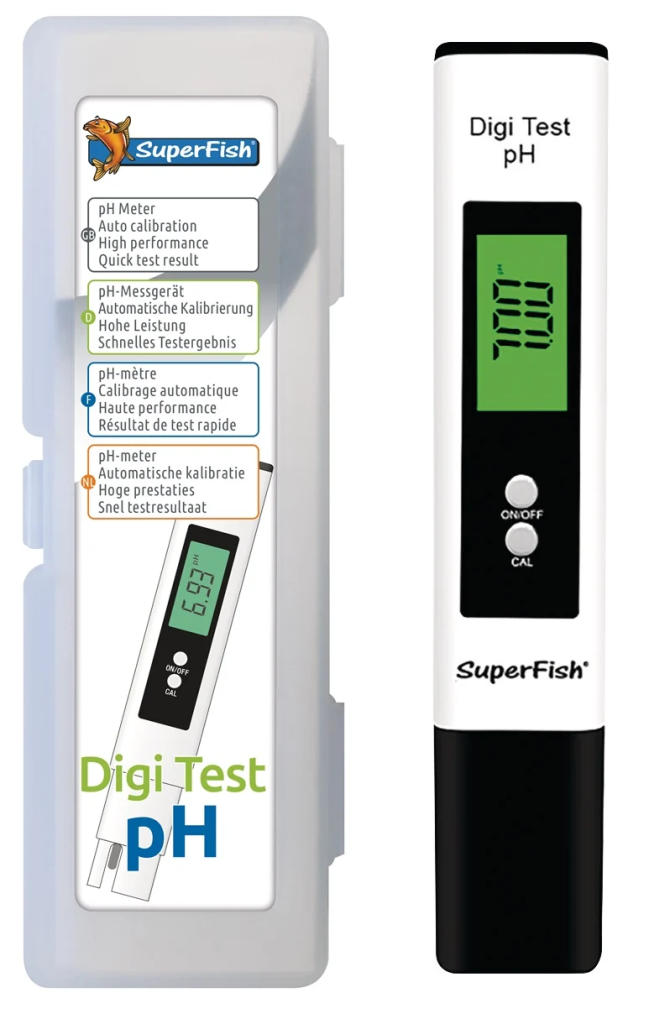
Measuring is knowing!
Measuring the water values in your aquarium is essential for a healthy living environment for your shrimps. To measure is to know, which is why we highly recommend using one electric meter that measures the values directly and accurately. This meters are easy to use and give you real-time information about important parameters such as pH, gH, kH and conductivity.
In addition to electric meters, there are also drop tests available for home use. They do require a bit more time and precision when performing the testing, but they still provide valuable information about the condition of the aquarium water.
If you are not able to measure the water values yourself, you can always contact us in the store. We offer free water tests where we help you determine the correct values and identify any problems.
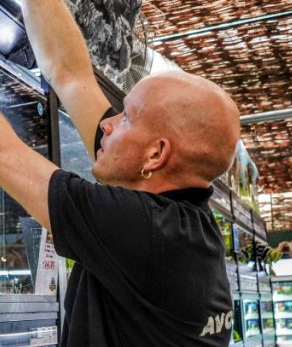
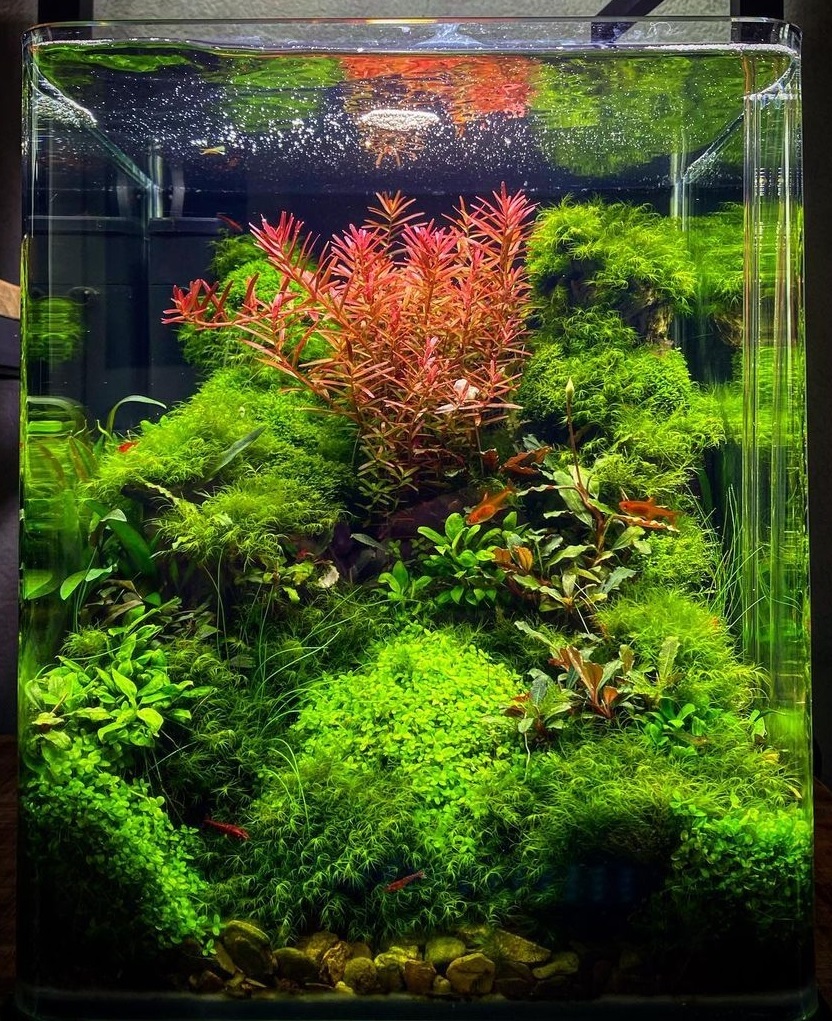
Shrimp Aquarium
A shrimp aquarium offers a great opportunity to keep these fascinating creatures in your home. Shrimp can be excellently kept in a nano aquarium of 15-20 liters, so you can find a place for a nano aquarium in every room and room.
Shrimp can already be kept in a nano shrimp aquarium.
With the proper establishment, water parameters and care, dwarf shrimp can be a colorful and vibrant addition to any space, even if you only have a limited space available.
A shrimp aquarium is a great way to enjoy the beauty and behavior of shrimp no matter the size of your enclosure.
The design of your shrimp aquarium
A well decorated shrimp aquarium is essential for the well-being of these small crustaceans. Shrimp thrive best in one aquarium that meets their natural behavior and needs. It is therefore important to create many hiding places, which can ideally be achieved with a beautiful aquascape. Dwarf shrimp love stones, wood and above all a lot aquarium plants, riding a We adds a nice finishing touch.
Moss is an indispensable element in your shrimp aquarium. Moss retains food residues excellently and serves as a safe hiding place for young shrimps. In addition to being functional, moss also looks beautiful in your shrimp aquarium.
Through aquascaping you can create a beautiful design for you shrimp aquarium. Using different types stones, wood, riding a aquarium plants you can set up a natural-looking landscape that is both functional and aesthetically pleasing. Think about posting stones in interesting formations, the use of wood to create caves and shelters, and strategically place them aquarium plants to add depth and texture.
Read in our blog “What is Aquascaping” everything about Aquascapen and start a beautiful one yourself establishment of your shrimp aquarium.

Can you use plant food in your shrimp aquarium?
Yes you can plant food use in you shrimp aquarium. Shrimp thrive in an environment with a lot aquarium plants en mosses. And shrimp can coexist harmoniously in an aquascape environment.
It's important to you plant proper care and therefore it is essential that they are given special care plant food received. Fortunately, most are aquarium plant foods safe for dwarf shrimp, as long as they don't contain excessive amounts of ammonium or heavy metals.
By ensuring a balance nutrition for you plant, they can thrive and create a beautiful environment for both the shrimp and plants to flourish.
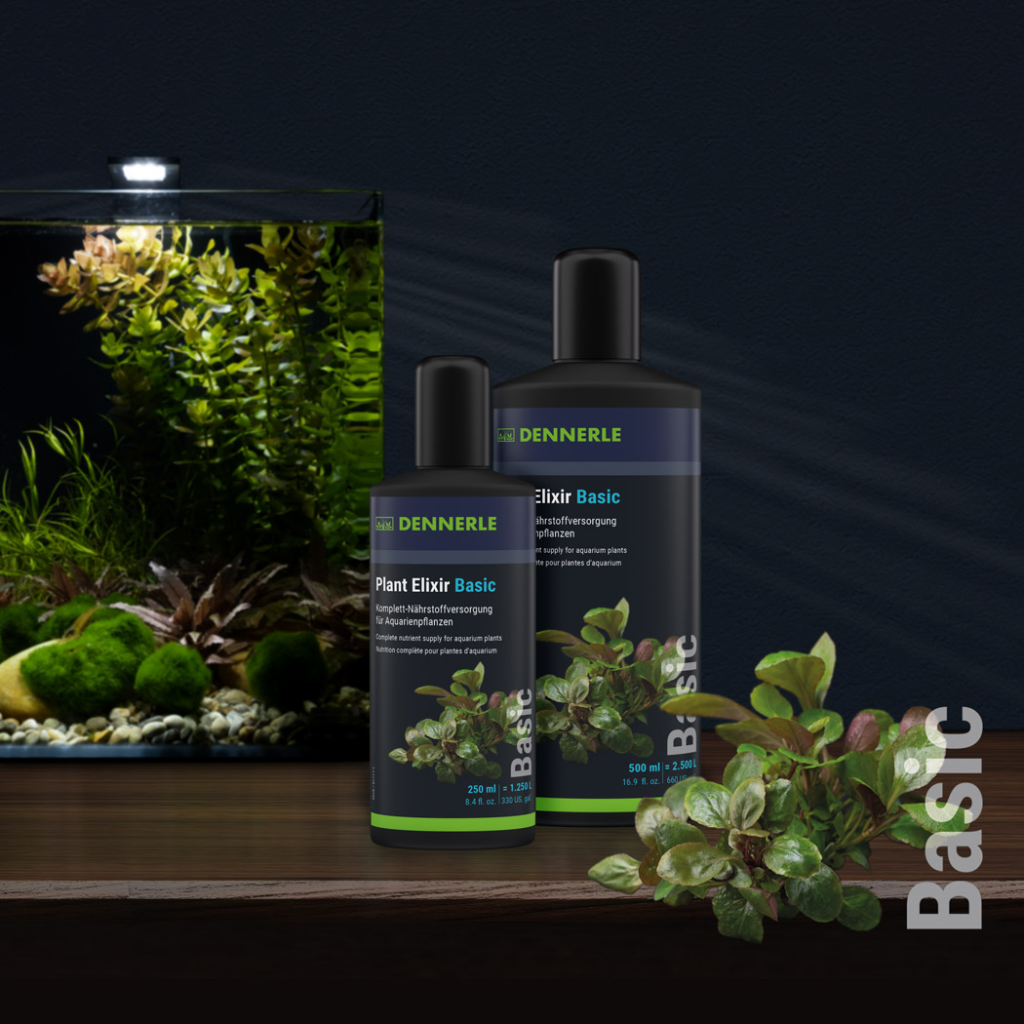
Can you use CO2 in your shrimp aquarium?
Yes you can CO2 use in you shrimp aquarium. CO2 is essential for proper growth of aquarium plants, because they need it for the process of photosynthesis. They use light, water and CO2 to produce glucose and oxygen. If there is not enough CO2 is present, plants cannot grow properly, which can manifest in discoloration of the leaves, holes in the leaves and long stems with few leaves.
CO2 is essential for the growth of aquarium plants and can be safely used in a shrimp aquarium. Adding CO2 promotes healthy plant growth, inhibits algae growth and helps create a harmonious ecosystem
Although filter bacteria, soil and aquarium inhabitants also contain small amounts CO2 produce, this is often not enough, especially in aquariums with medium to high light intensity which is often required for aquarium plants.
The addition of CO2 can not only promote plant growth, but also inhibit algae growth, which is an added benefit. It is important to CO2 dosing well suited to your needs aquarium plants and your shrimp's sensitivity, to ensure they can thrive in a healthy and balanced environment.

Technique in your shrimp aquarium
To a shrimp aquarium to function properly, some essential technical components are required. First is one aquarium heater necessary to maintain the correct temperature. Dwarf shrimp have specific temperature requirements, so being able to accurately control the water temperature is important. Using a reliable thermometer is also crucial to be able to continuously monitor the temperature and make adjustments if necessary.
Maintaining the right temperature, ensuring good water flow and filtration are crucial to the shrimp's well-being. For this reason, a well-functioning shrimp aquarium requires essential technical components such as an aquarium heater and a filter.
In addition, a filter is of great importance for a shrimp aquarium. A filter ensures proper water flow and filtration, which is essential for maintaining a healthy environment for the shrimp. It removes waste and contaminants from the water, which benefits the water quality.
When choosing one filter for a shrimp aquarium it is important to take into account the vulnerability of your shrimp, especially that of young dwarf shrimp. Regular aquarium filters can be dangerous, as young shrimp can become trapped in them.
That is why we recommend opting for the special one shrimp filters from Dennerle, or to use a safe alternative such as a sponge filter.
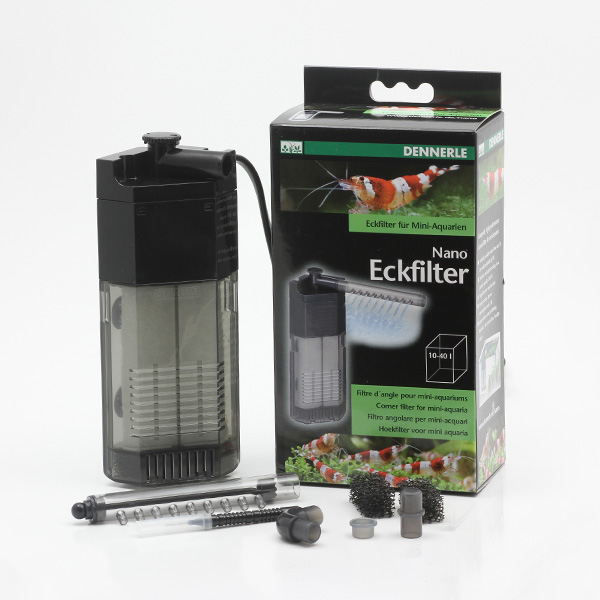
Maintenance of your shrimp aquarium
The maintain of a shrimp aquarium doesn't require much work as dwarf shrimps are scavengers by nature and you aquarium keep clean. It is important not to overfeed as overfeeding can lead to water contamination.
A weekly water change of 10-20% is sufficient to maintain the water quality. In the case of Caridina Shrimp, the new water you add must be treated in order to achieve the correct water values.
In addition, it is advisable to regularly clean the windows aquarium to clean. This ensures that you aquarium looks fresh and that you have a clear view of your shrimps.
The best food for your shrimp
The nutrition of shrimp is very important to ensure that they remain healthy and thrive in it aquarium. Shrimp are omnivorous and will happily eat dead plant debris, feces, and other organic materials. However, it is essential that shrimps are fed primarily plant foods, similar to their diet in the wild.
Shrimp are omnivorous, but it is essential that they are fed mainly plant foods, similar to their diet in the wild. Provide a varied diet and include special shrimp foods to promote their optimal health and well-being.
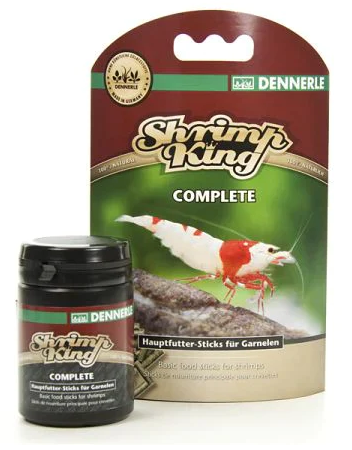
By providing a varied diet and a well-balanced ecosystem, dwarf shrimps can optimally flourish in you aquarium.
While shrimp are naturally excellent clean-ups and help control algae and waste, they cannot rely solely on the foods naturally found in the aquarium is present.
That is why we recommend feeding your dwarf shrimps daily with specially balanced shrimp nutrition. In addition, you can also expand the diet with suitable leaves that contain microorganisms that benefit them.
Providing a balanced diet and proper care will keep your shrimp healthy and happy.
Can you keep shrimps together with other aquarium inhabitants?
Shrimp are friendly animals and can generally be kept together with other aquarium inhabitants. However, there are some exceptions, notably predatory fish, that may view dwarf shrimp as food. A general rule of thumb is that if a fish is able to get the shrimp in its mouth, it probably will. It is important to keep this in mind when selecting tank mates for shrimp.
If you would like to breed and enjoy young dwarf shrimps, it is good to know that shrimp breeding is made difficult when shrimps are kept together with fish. Fish like to eat the young shrimp before they mature, hindering reproduction. If you are interested in growing dwarf shrimp, it is advisable to place them in a specific shrimp aquarium without keeping fish.
Shrimp, on the other hand, pairs well with small fish such as Rasbora brigittae and Rasbora galaxy. These microfish pose no threat to the shrimp and can coexist peacefully.
It is always important to research the specific needs and compatibility of different types of aquarium inhabitants before placing them together. In this way you can create a harmonious and healthy living environment for all aquarium inhabitants.
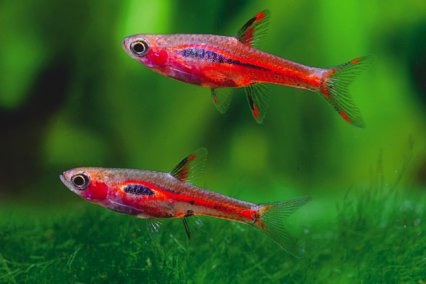
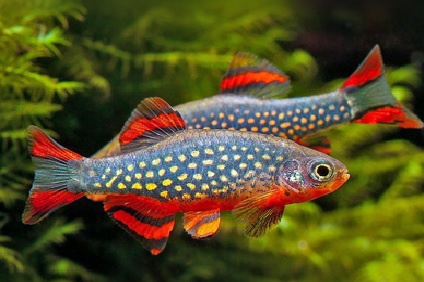
Purchasing shrimp
When purchasing shrimp, it is important to keep some important aspects in mind. Shrimp are social animals, so we recommend keeping them in groups, with a minimum of 10 dwarf shrimp.
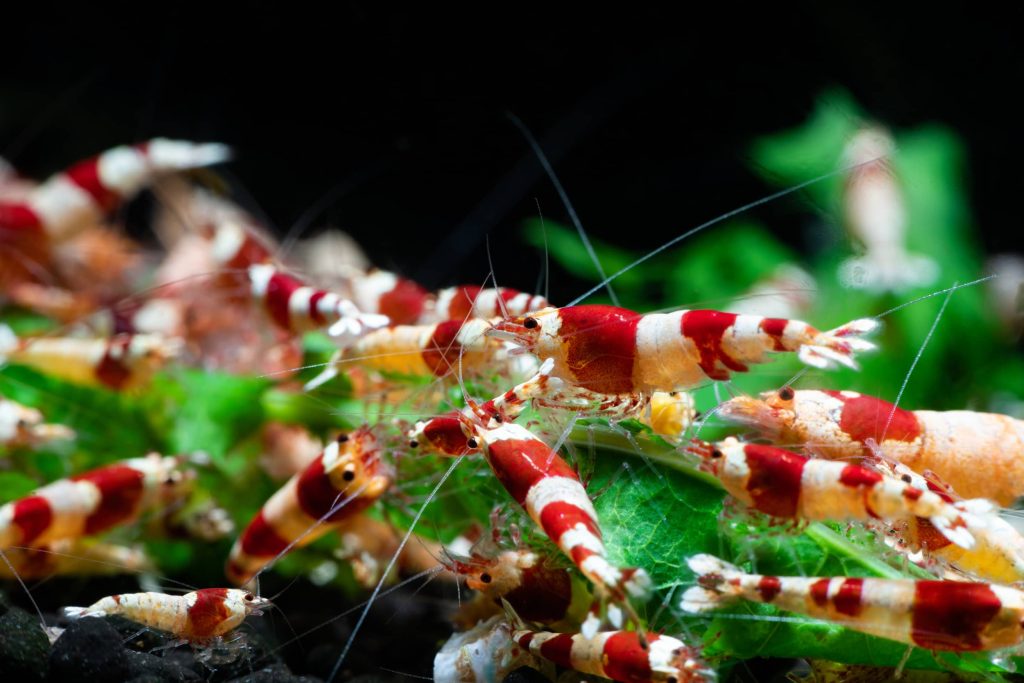
When transporting dwarf shrimp, it is essential to minimize stress. We ensure that your shrimps are in a suitable transport bag with the correct water and air ratio. A piece of sponge is added so that the shrimp can stick to it during transport.
It is important to take care when transporting the shrimp and make sure they are not left in the transport bag for too long. This way you can keep stress to a minimum and introduce the dwarf shrimp to their new environment safely and healthily.
Get shrimp used to the water parameters for a smooth transition
An important aspect when introducing dwarf shrimps is carefully getting them used to the water parameters of your aquarium. Introducing shrimp to a new tank is an important step to minimize stress and fluctuations in water parameters.
A commonly used method is the drip method with a knot in an air hose. Water is slowly dripped from the new aquarium into the bag or bucket where the shrimps are located.
The Drip Method is a gradual transition for the stress-free transfer of shrimps
Another method is to add a small cup of water every 5 minutes to the shipping bag or container that your shrimp are in. In this way, a gradual transition takes place and dwarf shrimps can easily get used to the new environment. It is recommended to continue this process until the transport water is approximately 75% aquarium water.
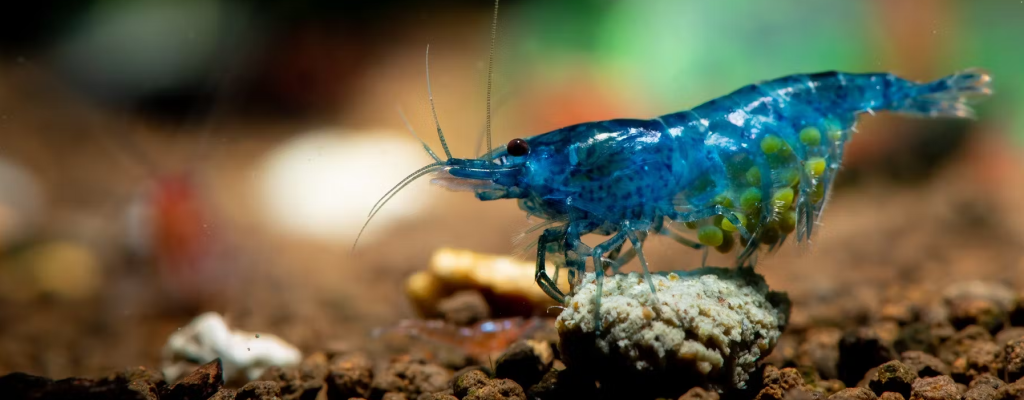
Everything in a row for the successful keeping of shrimps
After reading this blog, we found out that dwarf shrimps are a very nice addition to any aquarium and are nice enough to start a special shrimp aquarium for. With the right information and water values, you can ensure that your shrimp remain healthy and happy. That is why we have listed the most important points for you once again.
- Choose the right shrimp species: Shrimp come in different types and colors. For beginners, Neocaridina shrimps such as the Fire shrimp are recommended because they are easier to care for. Caridina shrimp, such as Crystal Red and Crystal Black, require more specific water parameters and are more suitable for experienced aquarists.
- Minimum 10 Shrimp: Shrimp are really group animals, do you want to start with dwarf shrimp? Then start with a group of at least 10 dwarf shrimp.
- Ensure the correct water values: Shrimp have specific requirements in terms of water parameters. Neocaridina shrimp can survive in a wide range of water parameters, while Caridina shrimp have specific requirements such as lower pH and soft water hardness. If necessary, use osmosis water, pH-lowering soils and mineral salts to adjust the water parameters.
- Let your aquarium run well: Before introducing shrimp, it is important to properly run your aquarium. This ensures that the water is stable and that no harmful substances such as ammonia and nitrite are present. Use an aquarium water test kit to regularly check water quality.
- Make sure you have enough hiding places: Shrimp like hiding places. Provide enough hiding places in your aquarium, such as stones, wood and aquarium plants. Moss can also serve as a safe hiding place for young shrimp.
- Be royal with plants: Shrimp and Plants are a perfect match. Choose various types of aquarium plants to ensure a healthy ecosystem in which your shrimps flourish.
- Choose the right technique: Shrimp are small pets and their young can be miniscule. Therefore choose a suitable filter that does not suck up all your young dwarf shrimps.
- Feed the shrimp with suitable food: Shrimp are omnivores and can be fed a variety of foods, such as shrimp feed, algae wafers, spirulina, vegetables, and feed paste. Make sure that the food is suitable for shrimp and does not contain harmful substances.
- Provide regular maintenance: Maintain your aquarium regularly by performing water changes and keeping the aquarium clean. Remove excess food, dead plants, and other debris to maintain water quality.
Remember that each shrimp species may have specific needs, so make sure you get the correct information about the species of shrimp you want to keep. With proper care and attention, dwarf shrimp can be a colorful and interesting addition to your aquarium!


